Depression (Major depressive disorder)
Table of content
- What is Major depressive disorder?
- What are the signs of Major depressive disorder?
- What are the main symptoms of Major depressive disorder?
- What are the causes of Major depressive disorder?
- What are the risk factors for Major depressive disorder?
- What are the types of Major depressive disorder?
- How is Major depressive disorder diagnosed?
- Who is at risk for Major depressive disorder?
- What is the treatment for Major depressive disorder?

Depression is a fairly common mental health illness that adversely affects an individual’s feelings, thoughts, and behaviors. Also called major depressive disorder, the condition is classified as a mood disorder.
Signs that indicate the presence of the disorder vary from mild to severe. The symptoms of depression include persistent sadness or hopelessness, loss of interest in activities once enjoyed, poor concentration, changes in appetite and weight, as well as suicidal thoughts and attempts.
Moreover, despite being a mental disorder, the condition does not only impact an individual’s emotional state, but their physical health and well-being, as well. The effects of depression include social isolation, panic disorder, chronic pain, fatigue, and unstable personal relationships.
Major depressive disorder also has distinct features that set it apart from a case of the “blues.” The characteristics of depression are extreme sadness, self-loathing, loss of interest and pleasure in activities previously enjoyed, low self-esteem, and feelings of hopelessness.
Despite the often-debilitating symptoms, depression is fortunately manageable and treatable through the use of approaches that keep symptoms at bay. Treatment for depression usually involves the use of medication and psychotherapy, or a combination of both.
What is Major depressive disorder?
Major depressive disorder is a serious mental illness that is characterized by feelings of intense sadness, low self-esteem, and a reduced interest in activities a person used to enjoy. Depression primarily affects an individual’s emotional state to the point of causing impairments in daily functioning.
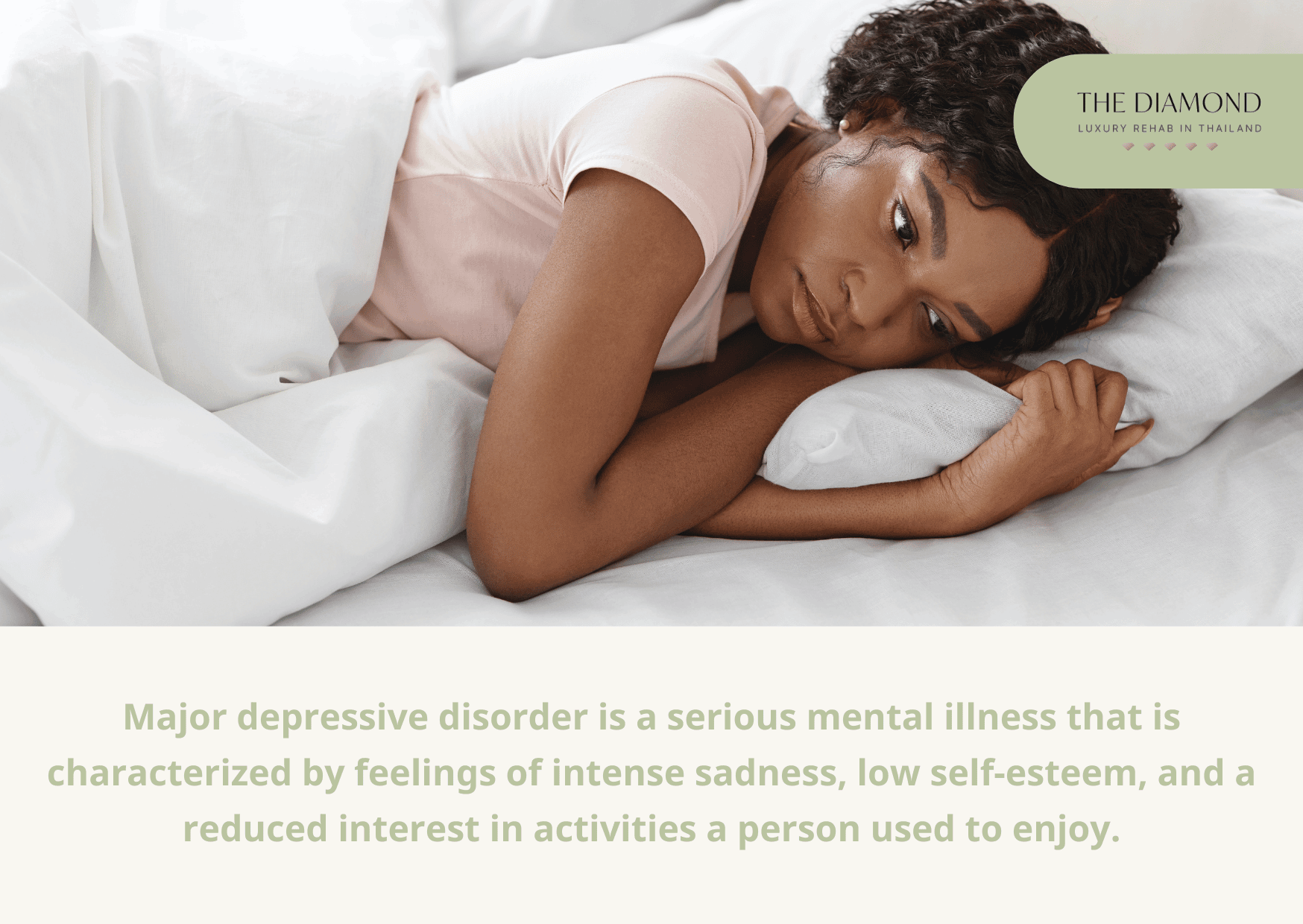
What are the signs of Major depressive disorder?
The signs of major depressive disorder are listed below.
- Persistent low mood or sadness: Sadness is a natural emotional response to certain life situations that cause distress and pain. Sadness is temporary and may go away in time. A study on sadness as an integral part of depression published in Dialogues in Clinical Neuroscience further adds that sadness is strongly associated with depression and its symptoms. When feelings of sadness persist and end up affecting all aspects of life, this may be an indication of major depressive disorder.
- Loss of interest in activities once enjoyed: One of the core symptoms of major depressive disorder. An ongoing loss of interest and pleasure in usual activities can be overwhelming and may significantly impair daily functioning.
- Poor concentration: Evidence exists that depression can cause irregularities in the regions of the brain involved in creating and retrieving memories. This can affect an individual’s ability to concentrate and can become serious over time, leading to a reduced level of functioning in many areas of life.
- Changes in appetite and weight: Appetite and weight changes are common in people with major depressive disorder. Some may have increased appetite, while others experience reduced appetite. This is because the areas of the brain involved in appetitive responses to food are also implicated in depression.
- Feelings of hopelessness: Depressed individuals have higher levels of hopelessness, which is an emotion marked by a lack of hope and optimism. Major depressive disorder can make people feel hopeless, as if there is no improvement or success to be expected in their future.
- Irritability or anger outbursts: Anger is a common emotion among individuals with major depressive disorder. They may feel intense anger that is difficult to control, and can become easily irritated and annoyed. Afflicted people may feel angry at the world, at their experiences, or even at themselves.
- Changes in sleeping patterns: Some changes in sleep seen in depression include taking too long to fall asleep, early morning awakenings, and too much sleep. People with sleep problems have a higher risk of developing depression. On the other hand, many people with depressive tendencies find it difficult to fall asleep or stay asleep.
Other signs of major depressive disorder include:
- Feeling tired and lacking energy
- Agitation and restlessness
- Feelings of guilt and worthlessness
- Suicidal thoughts and attempts
- Slowing down of mental or physical activities
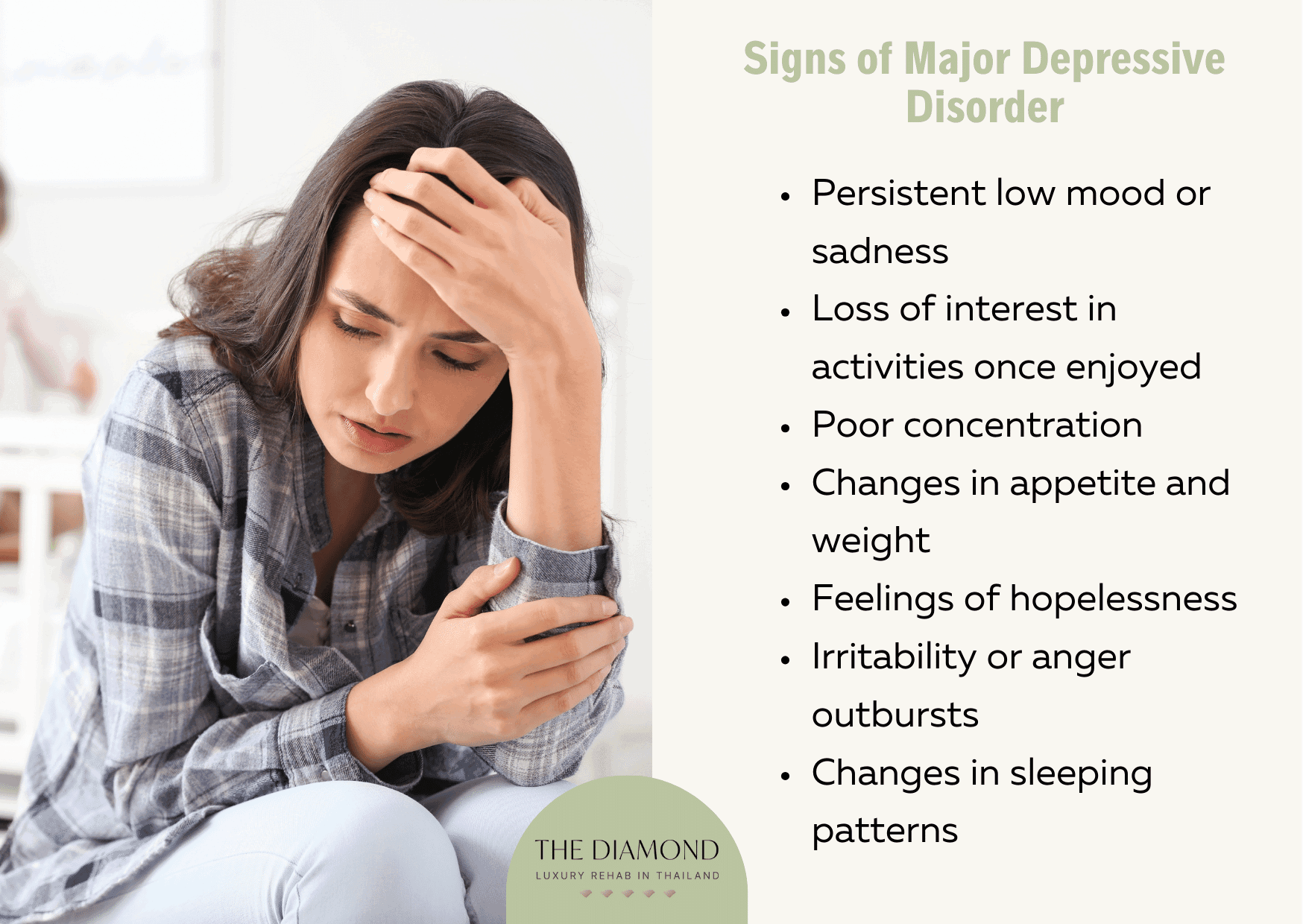
What are the main symptoms of Major depressive disorder?
The main symptoms of major depressive disorder are persistent low mood, loss of interest in activities previously enjoyed, poor concentration, feelings of worthlessness or guilt, changes in appetite, and suicidal ideation and attempts. However, certain symptoms tend to be more common in some genders.
Depression is prevalent in women than men. According to the World Health Organization, 3.8% of the population suffer from depression, 5% of that estimate are adults and 6% of which are women. A paper published in the Journal of Psychiatry and Neuroscience on why is depression prevalent in women emphasized that females develop depression at much higher rates than men and that women suffer from depression throughout different states in life, such as during puberty, pregnancy, menopause, and even after giving birth or having a miscarriage. Symptoms of major depressive disorder that are more commonly seen in women include anxiety, fatigue, ruminating thoughts, increased irritability, and mood swings.
Major depressive disorder has debilitating effects on women, especially during pregnancy and after giving birth. They may become unable to look after themselves during pregnancy and may not follow recommendations. Having postpartum depression may also make it more difficult to tend to the needs of the baby and to bond with them.
Men, on the other hand, are less likely to seek help for mental health issues than women. A study on the gendered manifestations of depression and help seeking among men published in the American Journal of Men’s Health highlights that major depressive disorder affects around one in nine men during their lifetime and that rates of undiagnosed depression are higher in men than women. The most common symptoms of major depressive disorder in men may include aggression, social isolation, spending a lot of time at work or struggling to function in daily duties at work, and displaying controlling or abusive behaviors. Males with depression are also more likely than women to have problems with drug or alcohol use and engage in risky behaviors as a consequence of the condition.
Male depression greatly impact men as they are more likely to go undiagnosed due to the stigma surrounding the disorder, and they are also more likely to commit suicide. This is because men are reluctant in discussing their symptoms and have an increased risk of acting impulsively on suicidal thoughts.
The condition also affects the LGBTQIA+ community at higher rates than straight and cisgender people. According to a study on mental health in lesbian, gay, bisexual, and transgender (LGBT) youth published in the Annual Review of Clinical Psychology, some symptoms of major depressive disorder that are more common in LGBTQIA+ people include self-harm, low self-esteem, sleep disturbances, substance abuse, and suicidal behaviors.
A combination of factors such as bullying, discrimination, internalized homophobia, rejection, isolation, stigma, and safety issues contribute to the development of depression in the LGBTQIA+ community. These challenges make them more likely to struggle with their mental health than people in the general population.
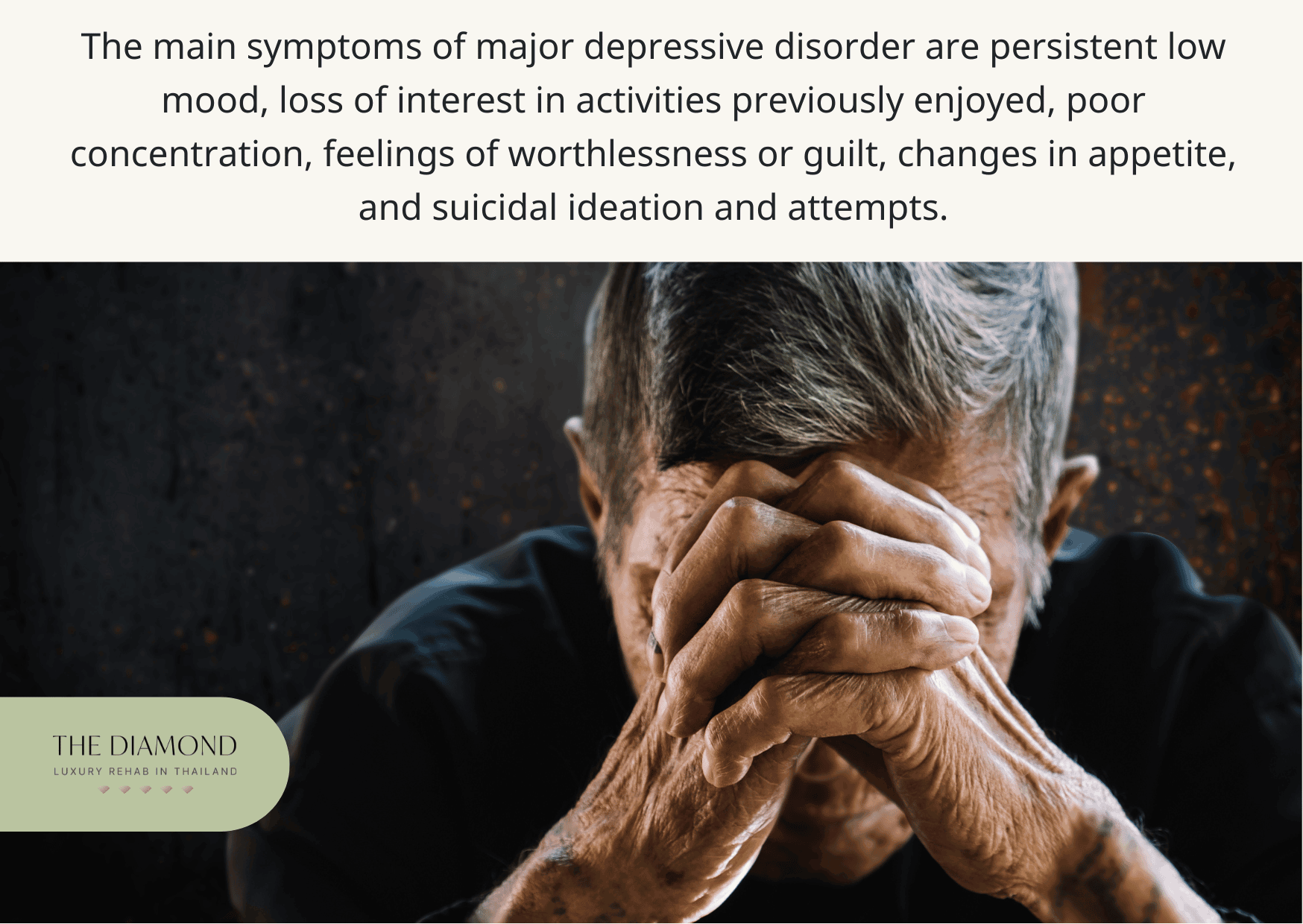
What does Major depressive disorder do to a person?
People with major depressive disorder have persistent feelings of sadness, a lack of interest in normal activities, and a plethora of physical and emotional problems that result from the condition.
The often-debilitating symptoms of depression can significantly reduce a person’s ability to effectively function at work or home. Signs that are indicative of the disorder can also hurt relationships with family or friends, as a depressed person can be challenging to deal with. Strained relationships further contribute to worsening self-esteem and make the afflicted person even more isolated, exacerbating depression.
What are the causes of Major depressive disorder?
The causes of major depressive disorder are physical changes in the brain, brain chemistry, hormone levels, and genetic features. Evidence exists that several regions of the brain lose gray matter volume (GMV) and shrink in individuals with depression.
Higher rates of GMV loss are observed in those who have ongoing depression with serious symptoms. Abnormal brain chemistry is another factor that contributes to the development of depressive disorders. Having low levels of neurotransmitters such as serotonin, norepinephrine, or dopamine can cause symptoms of the condition.
Changes in hormone levels could result in the onset of depressive states. Different periods of time including postpartum period, menopause, and menstrual cycle can trigger changes in hormone states, increasing a person’s risk for depression.
Major depressive disorder may also be an inherited condition. One may be more likely to experience a depressive disorder at some point in their life if they have blood relatives who also have depression or another mood disorder. Although the exact genes involved in the condition are still unknown, researchers believe that having a combination of certain genes could lead to major depressive disorder.
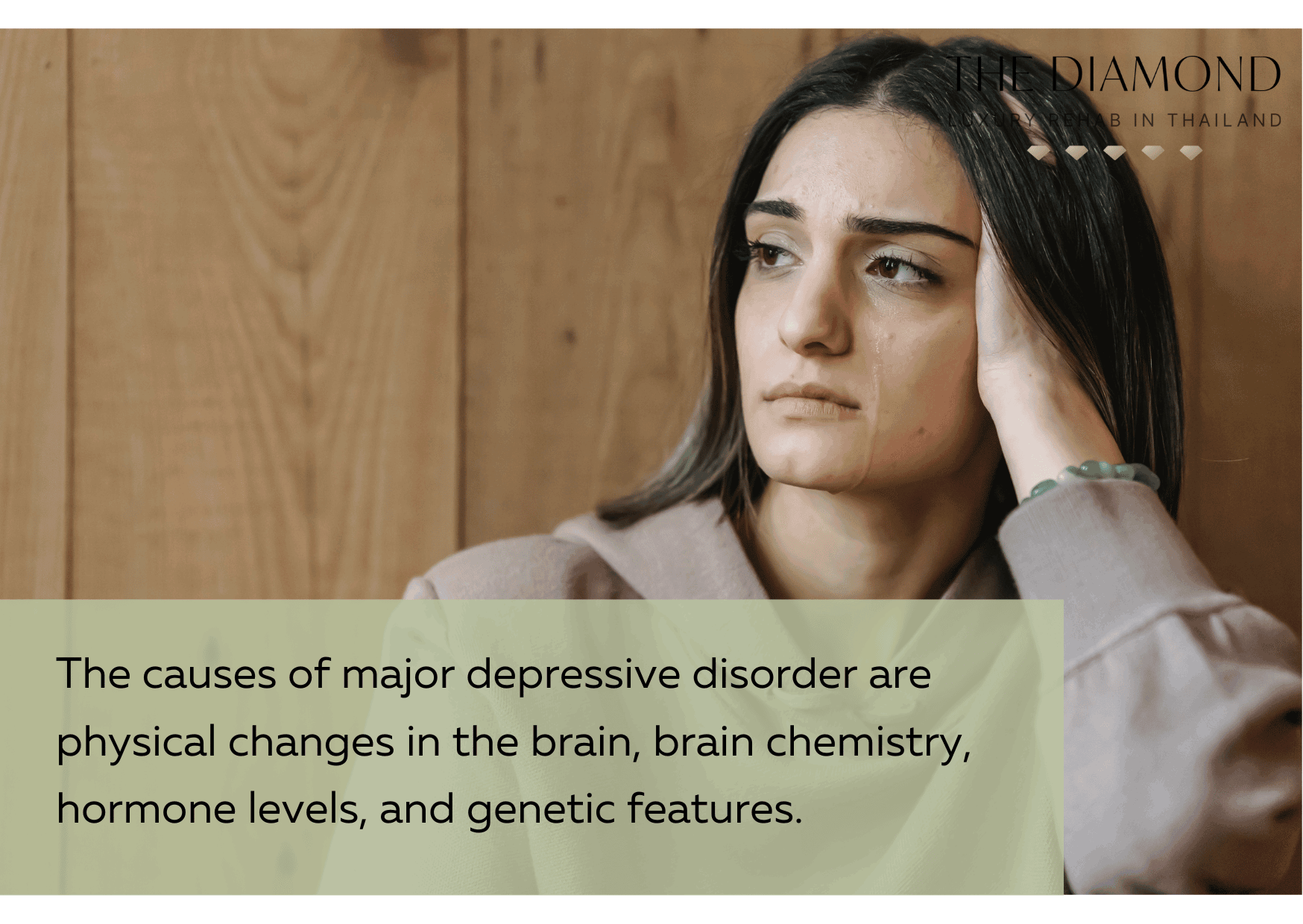
What are the risk factors for Major depressive disorder?
A complex interplay of factors may constitute what is depressive disorder. The risk factors for major depressive disorder are listed below.
- Sex: Women are nearly twice as likely as men to be diagnosed with major depressive disorder. The peak onset of symptoms in women also tends to coincide with their reproductive years, or between 25 and 44 years of age.
- Gender identity: People who identify as lesbian, gay, bisexual, or transgender are more likely to report feelings of depression than cisgender people. This is due to the many challenges they face, such as lack of acceptance from their family or community and discrimination.
- A family history of depression: Having blood relatives with a history of depression or other mental illnesses such as bipolar disorder or alcohol abuse puts someone at an increased risk for depression.
- Experiencing traumatic life events: Going through traumatic experiences such as physical or sexual violence, the sudden death of a loved one, or financial ruin can cause people to develop extreme symptoms of stress, which could also develop into depression.
- Certain physical illnesses: Major depressive disorder is associated with other serious or chronic illnesses, including cancer, heart disease, stroke, or chronic pain.
Other risk factors for major depressive disorder include:
- Low self-esteem
- Substance use disorder
- Lack of coping skills
- Low vitamin D levels
- The use of certain medications, such as corticosteroids and beta-blockers

What are the types of Major depressive disorder?
Different types of the illness are named according to causes and symptoms. The types of major depressive disorder are listed below.
- Major depression: Otherwise known as major depressive disorder or clinical depression, this type involves experiencing intense symptoms for two weeks or longer. Major depression is characterized by pervasive low mood, lack of interest in activities that are usually pleasurable, and sleep disturbances, to name a few. Its symptoms can result in significant impairment of daily functioning.
- Persistent depressive disorder (PDD): Also called dysthymia, this form of depression is chronic and lasts for two years or longer. Symptoms are less severe compared to that of major depression and may include fatigue, low self-esteem, or changes in appetite.
- Postpartum Depression (PPD): a complex interplay of physical, emotional, and behavioral changes that develop in some women during pregnancy and up to one year after giving birth. PPD is different from the “baby blues,” and could cause symptoms that are more severe and longer-lasting.
- Atypical depression: its symptoms differ from the traditional diagnostic criteria of major depression, the unique feature of this type is that afflicted people’s moods can temporarily brighten in the face of potential positive events. This is called mood reactivity. Symptoms may include increased appetite or significant weight gain, excessive sleepiness, and oversensitivity to rejection.
Other types of major depressive disorder include:
- Bipolar disorder
- Seasonal affective disorder (SAD)
- Premenstrual dysphoric disorder (PMDD)
- Psychotic depression
How is Major depressive disorder diagnosed?
Major depressive disorder is diagnosed by using varied diagnostic tools such as a physical exam, lab tests, and psychiatric assessment. A physical exam may be done by the doctor to determine if any other health conditions might be causing one’s symptoms.
This could include lab tests such as blood work to check for thyroid problems or vitamin D deficiency, which could both cause symptoms of major depressive disorder. However, if other underlying health concerns are ruled out, a patient may be referred to a psychiatrist for a more in-depth psychiatric assessment.
A psychiatric assessment involves a mental health professional asking about the patient’s thoughts, symptoms, and feelings. The psychiatrist may also use a specialized questionnaire to help an individual answer questions about their symptoms. The diagnosis will then be based on their symptoms and answers, and will be compared to the diagnostic criteria for major depressive disorder listed in the Diagnostic and Statistical Manual of Mental Disorders (DSM-5).

Who is at risk for Major depressive disorder?
Major depressive disorder is more common in women, individuals who experienced adverse life events, those who have a family history of depression, and people who lack social support.
Women are more likely to develop depression than men. This may be due to hormonal changes they experience at different stages of life, such as puberty, during pregnancy, and after giving birth or suffering from a miscarriage.
People who went through adverse life events such as unemployment, death of a loved one, and physical or sexual abuse are also at an elevated risk of developing major depressive disorder. The condition can run in families as well, as those who have a personal and family history of depression and other mental health problems such as bipolar disorder and alcohol abuse have a genetic predisposition to depression.
Lastly, those who suffer from a lack of social support are more likely to develop major depressive disorder, as they often report having no family, friends, or relatives they can count on in times of difficulty.
What is the treatment for Major depressive disorder?
Seeking treatment for major depressive disorder is extremely important in attaining the right level of care and social support a person needs. If left untreated, depression can cause significant impairment in an individual’s work, family, and social life. The most common treatment options for major depressive disorder are listed below.
- Antidepressants: Antidepressant medications, including selective serotonin reuptake inhibitors (SSRIs), serotonin-norepinephrine reuptake inhibitors (SNRIs), as well as tricyclic and atypical antidepressants can help relieve symptoms of depression. SSRIs are the most commonly prescribed antidepressants, and they also have fewer side effects compared to other medicines in the same class of drugs. In general, antidepressants help alter an individual’s brain chemistry, which is a contributing factor to the development of the condition.
- Psychotherapy: Otherwise known as talk therapy, certain types of psychotherapy are effective in treating major depressive disorder, such as cognitive behavioral therapy (CBT) and interpersonal psychotherapy. CBT helps modify thought patterns to improve someone’s moods and behaviors. On the other hand, interpersonal psychotherapy addresses a depressed person’s problems with interpersonal connections, which can contribute to their condition.
- Electroconvulsive therapy (ECT): People who do not get better with drug treatment may benefit from electroconvulsive therapy. ECT uses small electric currents that pass through the brain in order to trigger changes in brain chemistry, which can help relieve depression.
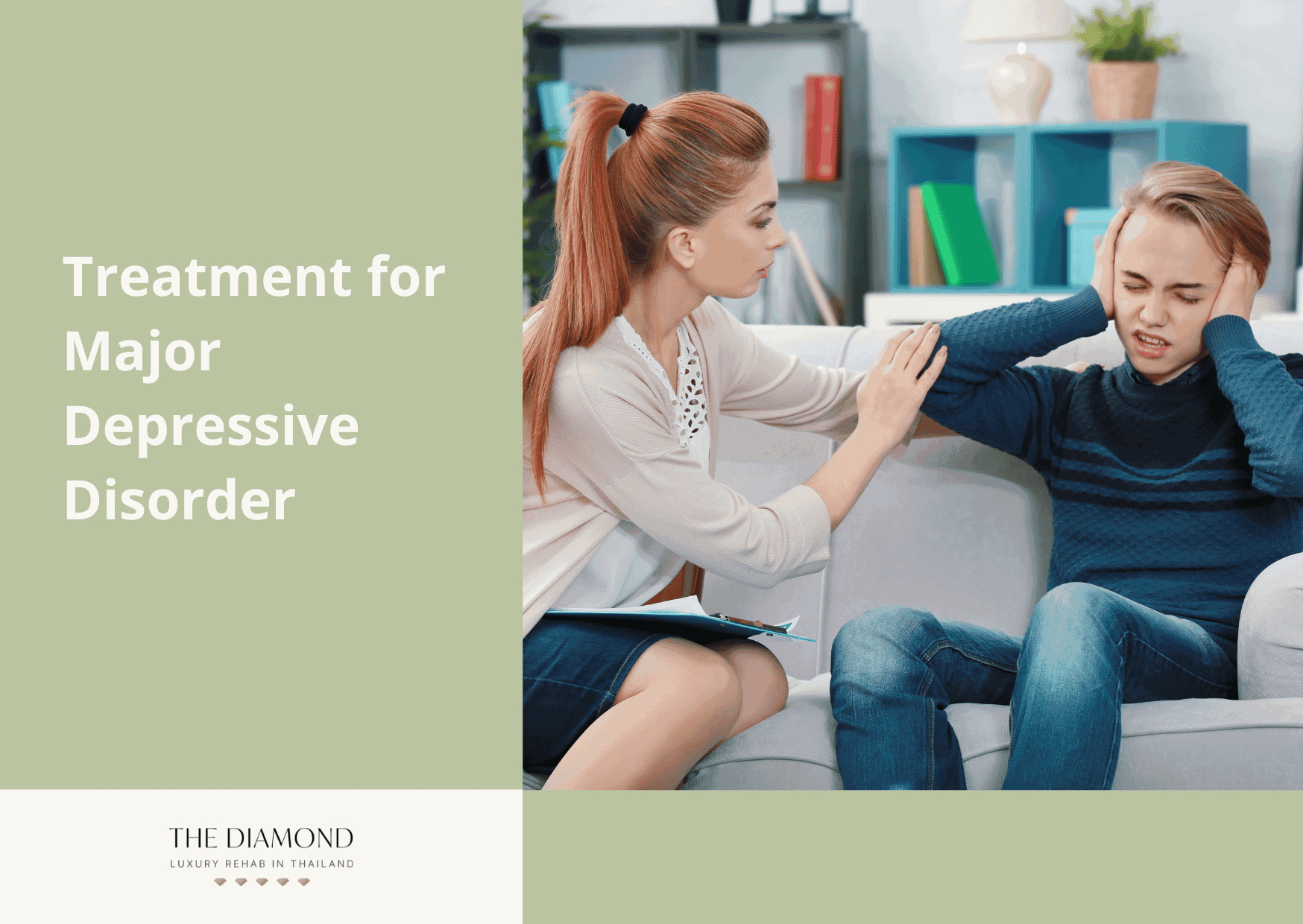
What other psychological problems are similar to depression?
Several mental health conditions tend to have overlapping symptoms, including depression. Getting an accurate diagnosis is the key to a positive health outcome. Some of the psychological problems that are similar to depression are listed below.
- Anxiety: Anxiety and depression are two different mental health conditions, but they tend to have overlapping symptoms, such as irritability, sleep disturbances, nervousness, and difficulty concentrating. Many people also have a diagnosis of both anxiety and depression.
- Bipolar disorder: The periods of depression experienced in bipolar disorder may be similar to the low mood felt in major depressive disorder. However, unlike bipolar disorder, depression does not have periods of emotional highs, where people feel overly energetic and euphoric.
- Cyclothymic disorder: involves low and high mood swings that are milder than those that occur in bipolar disorder. The quick mood changes involved in cyclothymic disorder are not common in depression.
- Chronic fatigue syndrome (CFS): Chronic fatigue syndrome and depression are both common, long-term illnesses. Fatigue commonly occurs as a sign of depression and is also the main symptom of CFS. However, CFS symptoms such as swollen lymph nodes, weakness, and a frequent sore throat do not occur in depression.
- Fibromyalgia: a condition that often gets mistaken for depression. Like fibromyalgia, depression can cause physical symptoms such as fatigue and pain. However, other signs of fibromyalgia are not seen in depression. These include muscle spasms, increased pain sensitivity, and numbness in legs, arms, and feet.

